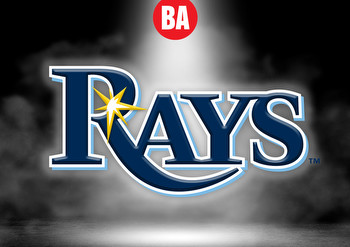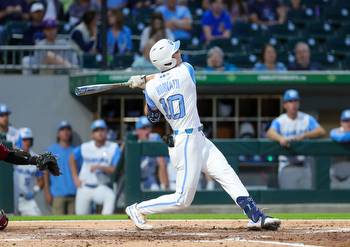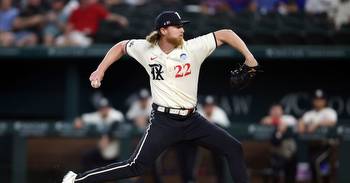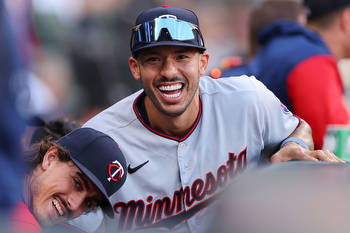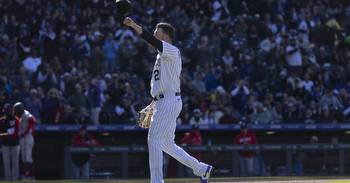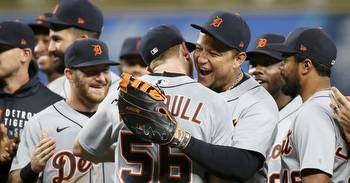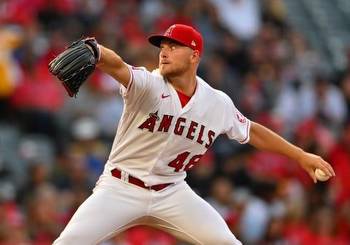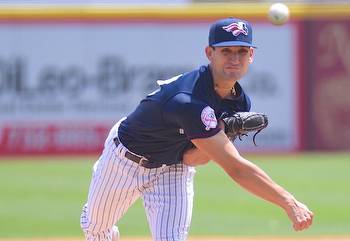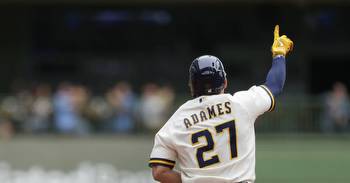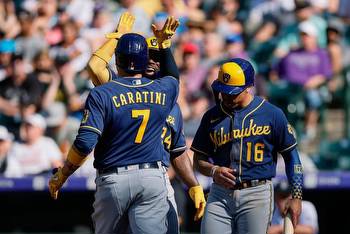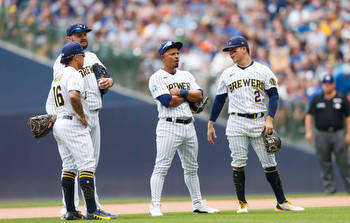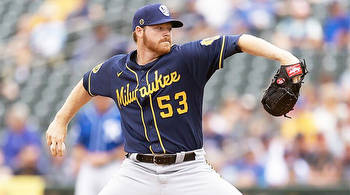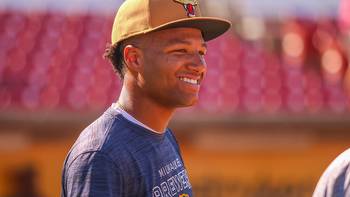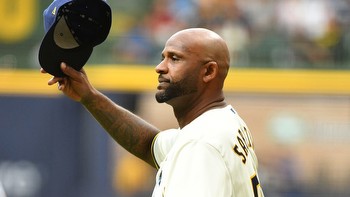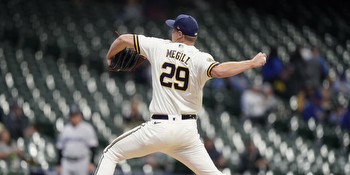Brewers' Eric Lauer's 'zoom ball' yields swings and misses
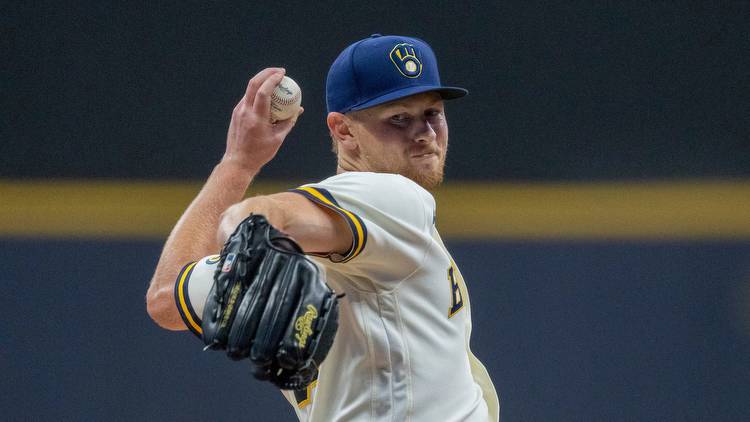
PHOENIX – Take a seat, class. Eric Lauer, wavy hair sweeping across his forehead and Starbucks cup in his hand, has gone into professor mode on a slow Arizona morning. The subject?
Zoomology 101.
“The study of zoom,” Lauer quips.
Lauer, now in his fourth season with the Brewers, is among the bigger personalities in the clubhouse. If he’s talking, odds are there’s a joke or sarcasm attached to whatever he's saying.
But not when he’s talking about the zoom ball, the name he has for his fastball. That’s serious business, and Lauer is more than willing to go in depth on the topic.
But the professor can be a student, too.
Last year, Lauer was the best in baseball in a somewhat peculiar skill: No starter generated a higher rate of swings and misses on fastballs right down the middle. Not Gerrit Cole. Not Shohei Ohtani. Not his teammate Corbin Burnes.
When presented with the leaderboard that showed his name at the top, the lefthander wrinkled his eyebrow.
“Oh, that is…” he said, his voice trailing off.
“That’s funky.”
Zoom concept helped Eric Lauer lead baseball in swings and misses on fastballs down the middle
Lauer grabbed the phone and took a closer look. Sure enough, there he was, having generated whiffs on 26.9% of his four-seamers right down the heart of the plate. That’s the highest percentage of the 118 starting pitchers who threw at least 35 middle-middle fastballs.
“The goal,” Lauer said, “is not to throw it right down the middle. But if there’s enough intent behind it, throwing it right down the middle is not as bad as it could be. That’s why it’s a weird statistic to me. It’s like a delightful surprise.
“You expect that ball to get crushed. But maybe there’s some characteristics to the fastball that help.”
Lauer then donned his professor hat again.
“I think that’s kind of like the zoom concept of it,” Lauer said. “The whole point of it is that the fastball is perceived differently to the hitter because it’s spinning so much faster. It’s not losing as much angle as it would naturally.
“It looks kind of like it’s going up a little because gravity’s not pulling it down as hard as it should be, so it messes with hitters’ eyes.”
The concept of spin rate is nothing new in baseball. Put most simply, the more revolutions of the ball a pitcher can generate on a fastball, the less it gets pulled down by gravity. That gives it the appearance of a “rising” effect to the hitter, who expects the pitch to reach the plate lower than it actually does.
But Lauer doesn’t have an elite spin rate on his fastball. Pitching coach Chris Hook called it modest. He doesn’t throw incredibly hard either, averaging 93.3 mph on his four-seam in 2022. So how does he get more hitters than anyone in baseball to look bad on a pitch that ought to be sent into orbit?
Deception and late movement make Lauer's fastball tick
Nobody on the Brewers understands Lauer better than Hook. He may even understand Lauer’s pitches better than Lauer himself.
“I knew that,” he cracked when presented with the same stat that surprised Lauer.
Who better, then, to explain Lauer’s unusual phenomenon.
The starting point, Hook believes, is with deception. Last year, Lauer shortened up his arm path, going from extending his left arm all the way down behind his body for a much tighter, compact angle that hides the ball from the hitter until it’s thrown.
Lauer ranked 52nd out of 123 pitchers in down-the-middle whiff rate in 2021 before making the arm path change.
What matters even more, though, is late life. It’s a concept that is more difficult to quantify, but those with a keen pitching eye can spot it. Both Hook and Lauer brought it up independently – and they qualify as having keen pitching eyes.
“To me, it’s happening in the last 2, 3 feet before it gets to the plate,” Hook said. “There’s something special there. You can’t teach that.”
That rising effect that Lauer mentioned is the late movement being described. The idea is to elevate the ball and allow it to “zoom” upward and toward the edge, especially Lauer’s armside corner. When he misses and leaves it over the middle – which he did nearly 200 times last year – the last-second movement gives him a better chance of not being punished by the hitter.
“Even when it doesn’t pop into that top corner, it’s still late and on,” Hook said. “That’s a special feature of the zoom. If he’s staying deceptive and staying in his delivery the correct way, we’ll get that kind of result.”
Lauer’s spin rates may not jump off the page, but his active spin plays a key role. Active spin measures how much of the ball’s spin contributes to the pitch’s movement. A higher active spin rate a fastball has, the more vertical movement the ball gets.
Lauer gets 96% active spin rate on his four-seam, which is in the top 20% of all pitchers. So even though he's not lighting up radar guns and not generating immense spin, Lauer can still have an effective fastball in the zone.
Put it all together and it makes for a unique skill for Lauer.
“The only thing I’ve ever heard from hitters is that the ball almost jumps on them,” he said. “It’s above where you think it should be. Normally a hitter is used to calculating with their eyes to go down to the ball but if the ball has that little rise to it, especially at the end, it’s just not what hitters are used to seeing.”
Giants 5, Brewers 2
The San Francisco Giants handed the Brewers a sixth loss in their last seven Cactus League games, but what was more important were a trio of developments for Milwaukee.
Garrett Mitchell, expected to be the opening day center fielder, exited the game with right hamstring tightness after running out a ground ball in the second inning. The Brewers are already thin in the outfield with Tyrone Taylor to miss opening day, which is three weeks from Thursday.
"He just felt it when he went out in the field, so we just took him out of the game here," Brewers manager Craig Counsell said. "I don't think you'll see him for a couple days, but I think we'll know what's going on tomorrow, for sure. But at this point it doesn't look like that big a deal."
Christian Yelich hit his second homer of the spring, both of the leadoff variety and both on the first pitch, and added a single to continue his strong showing this camp. Yelich is 6 for 12 with a 1.738 OPS during Cactus League play.
Lefthander Wade Miley made his spring debut in a live game and mowed down the Giants, striking out five over two perfect innings.
"The cutter and change up were really good today," Counsell said. "He sequenced well and Victor (Caratini) did a heck of a job with him. When he does that, it's tough. It's really tough."

